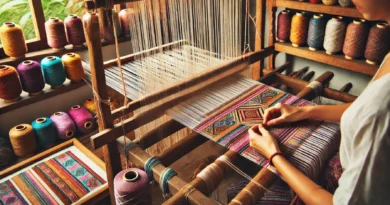Discovering the World of Ceramics: Ceramics, Sculpture and Much More
Among the many creative universes that awaken our sensitivity and connect us with the past, the world of ceramics stands out as one of the oldest and most fascinating. Over the centuries, different cultures have shaped clay with their hands, transforming simple pieces of clay into utensils, art, and symbols of cultural identity. Today, this ancient tradition remains alive, renewed by contemporary artists and by people who seek in handmade work a form of expression and well-being.
Exploring the world of ceramics is also diving into a tactile universe, where the raw material interacts with fire, time, and emotions. Each piece carries the energy of its creator, whether it’s a utilitarian object like a bowl made on the wheel or an abstract sculpture carefully shaped over hours. More than a technique, ceramics is a journey of self-discovery — a practice that invites us to slow down, observe, and feel.
In addition, sculpture in ceramics has gained prominence not only in galleries and art exhibitions but also in home studios and creative communities around the world. Clay has become an accessible artistic language, allowing infinite creative possibilities — from delicate miniatures to large installations. But after all, where do we start in this vast and enchanting universe?
The Magic of Clay: First Steps in Ceramics
If you want to take your first steps into the world of ceramics, know that no prior experience or advanced artistic skills are needed. The most important thing is the willingness to experiment. Contact with clay is therapeutic, intuitive, and extremely rewarding. Getting started can be as simple as buying a block of clay and shaping basic forms with your hands. Techniques like pinching, coil building, or slab construction are ideal for beginners.
Many cultural centers, art schools, and studios offer introductory workshops. In these classes, it’s common for students to learn everything from preparing the clay to firing the pieces in specialized kilns. Firing, by the way, is a crucial stage in the ceramics process — it’s during this moment that the piece gains strength and can be glazed, painted, or left in its natural tone.
A simple project example for beginners is making a small vase. Using the pinching technique, you can shape the clay with your fingers until you form a container. After completely drying (which can take from a few days to a week), the piece is fired and ready to be used or decorated.
Ceramic Sculpture: Expression and Creativity
Sculpture made with ceramics is a form of art that allows free expression of creativity. Unlike modeling aimed at functional objects, sculpture prioritizes form, symbolism, and visual narrative. Ceramic sculptors use different types of clay, tools, and techniques to create everything from realistic busts to completely abstract forms.
For those already familiar with the material, exploring sculpture can be a natural path for deepening their skills. Working with larger volumes requires attention to the structure and drying time of the piece, but the result can be surprising. Furthermore, there is a strong emotional connection in the sculpting process: it’s like giving life to the material.
Renowned artists like Lygia Clark and Louise Bourgeois found in ceramics a powerful medium to express their worldviews. Today, many contemporary ceramicists are blending traditional techniques with modern languages, using natural pigments, metallic oxides, and experimental glazing to create unique works.
Techniques and Styles to Explore
The universe of ceramics is vast and encompasses many branches: utilitarian ceramics, artistic ceramics, decorative ceramics, raku, faience, porcelain, stoneware… Each type of clay, glaze, and firing results in different effects, and learning about these variations is part of the creative journey. Below are some techniques and styles worth exploring:
- Wheel-thrown ceramics: A traditional technique where the piece is shaped on a spinning wheel. It requires practice and coordination but allows for symmetrical and refined forms.
- Raku: A Japanese technique where pieces are removed from the kiln while still glowing hot and quickly cooled in sawdust or water, creating unique effects.
- Glazed ceramics: After the first firing (bisque), the piece receives a glaze layer and returns to the kiln. The result can range from rustic to glossy, depending on the glaze composition.
The choice between these techniques depends both on the piece’s purpose and the available resources. Some require specific equipment, such as a high-temperature kiln, but others can be done with alternative firing methods like a home-built wood kiln or even firing in metal cans.
Beyond Art: Ceramics as a Lifestyle
Many practitioners report that ceramics changes the way they see the world. Contact with the earth, the slow pace of the process, and the required concentration help develop patience, focus, and mindfulness. For some, it’s a form of active meditation; for others, a reconnection with the simpler roots of life.
With the popularization of handicrafts and the “do it yourself” movement, ceramics has also become part of interior design, fashion, and even gastronomy. Handmade plates, mugs, and bowls add a special charm to meals and value manual work. Ceramic sculptures on shelves or in gardens bring personality and warmth to the environment.
Getting involved with ceramics, sculpture and much more is an invitation to live more consciously and creatively. Whether as a hobby, profession, or simple curiosity, this universe has something to offer everyone who allows themselves to feel the clay between their fingers and watch, little by little, art emerge from their hands.



